Thomas P. Ryan9780470081877, 0470081872
Modern Engineering Statistics presents state-of-the-art statistical methodology germane to engineering applications. With a nice blend of methodology and applications, this book provides and carefully explains the concepts necessary for students to fully grasp and appreciate contemporary statistical techniques in the context of engineering.
With almost thirty years of teaching experience, many of which were spent teaching engineering statistics courses, the author has successfully developed a book that displays modern statistical techniques and provides effective tools for student use. This book features:
Examples demonstrating the use of statistical thinking and methodology for practicing engineers
A large number of chapter exercises that provide the opportunity for readers to solve engineering-related problems, often using real data sets
Clear illustrations of the relationship between hypothesis tests and confidence intervals
Extensive use of Minitab and JMP to illustrate statistical analyses
The book is written in an engaging style that interconnects and builds on discussions, examples, and methods as readers progress from chapter to chapter. The assumptions on which the methodology is based are stated and tested in applications. Each chapter concludes with a summary highlighting the key points that are needed in order to advance in the text, as well as a list of references for further reading. Certain chapters that contain more than a few methods also provide end-of-chapter guidelines on the proper selection and use of those methods. Bridging the gap between statistics education and real-world applications, Modern Engineering Statistics is ideal for either a one- or two-semester course in engineering statistics.
Table of contents :
Modern Engineering Statistics……Page 4
Contents……Page 8
Preface……Page 20
1. Methods of Collecting and Presenting Data……Page 24
1.1 Observational Data and Data from Designed Experiments……Page 26
1.2 Populations and Samples……Page 28
1.3 Variables……Page 29
1.4 Methods of Displaying Small Data Sets……Page 30
1.4.1 Stem-and-Leaf Display……Page 31
1.4.2 Time Sequence Plot and Control Chart……Page 32
1.4.3 Lag Plot……Page 34
1.4.4 Scatter Plot……Page 35
1.4.6 Dotplot……Page 37
1.5.1 Histogram……Page 39
1.5.2 Boxplot……Page 43
1.7 Other Methods……Page 45
1.9 Graphical Methods: Recommendations……Page 46
References……Page 47
Exercises……Page 48
2. Measures of Location and Dispersion……Page 68
2.1 Estimating Location Parameters……Page 69
2.2 Estimating Dispersion Parameters……Page 73
2.3 Estimating Parameters from Grouped Data……Page 78
2.4 Estimates from a Boxplot……Page 80
Exercises……Page 81
3.1 Probability: From the Ethereal to the Concrete……Page 91
3.2 Probability Concepts and Rules……Page 93
3.2.1 Extension to Multiple Events……Page 96
3.2.1.1 Law of Total Probability and Bayes’ Theorem……Page 97
3.3 Common Discrete Distributions……Page 99
3.3.1 Expected Value and Variance……Page 101
3.3.2 Binomial Distribution……Page 103
3.3.2.1 Testing for the Appropriateness of the Binomial Model……Page 109
3.3.3 Hypergeometric Distribution……Page 110
3.3.4 Poisson Distribution……Page 111
3.3.4.1 Testing for the Appropriateness of the Poisson Model……Page 113
3.3.5 Geometric Distribution……Page 114
3.4.2 Determining Probabilities for Continuous Random Variables……Page 115
3.4.3 Normal Distribution……Page 116
3.4.4 t-Distribution……Page 120
3.4.5.1 Chi-Square Distribution……Page 123
3.4.5.2 Exponential Distribution……Page 124
3.4.6 Weibull Distribution……Page 125
3.4.7 Smallest Extreme Value Distribution……Page 126
3.4.9 F Distribution……Page 127
3.5 General Distribution Fitting……Page 129
3.6 How to Select a Distribution……Page 130
3.7 Summary……Page 131
Exercises……Page 132
4.2.1 Unbiasedness and Consistency……Page 144
4.2.2 Minimum Variance……Page 145
4.2.4 Comparing Biased and Unbiased Estimators……Page 147
4.3 Distributions of Sampling Statistics……Page 148
4.3.1.1 Illustration of Central Limit Theorem……Page 149
4.4.1 Method of Maximum Likelihood……Page 151
4.4.2 Method of Moments……Page 153
4.4.3 Method of Least Squares……Page 154
4.5 Estimating σ()θ……Page 155
4.7 Summary……Page 156
Exercises……Page 157
5.1 Confidence Interval for μ: Normal Distribution, σ Not Estimated from Sample Data……Page 163
5.1.1 Sample Size Determination……Page 165
5.1.2 Interpretation and Use……Page 166
5.1.3 General Form of Confidence Intervals……Page 168
5.2.1 Sample Size Determination……Page 169
5.3.1 Null Hypotheses Always False?……Page 170
5.3.2 Basic Hypothesis Testing Concepts……Page 171
5.3.3 Two-Sided Hypothesis Tests Vis-à-Vis Confidence Intervals……Page 175
5.3.4 One-Sided Hypothesis Tests Vis-à-Vis One-Sided Confidence Intervals……Page 176
5.3.6 When to Use t or Z (or Neither)?……Page 178
5.3.7 Additional Example……Page 179
5.4 Confidence Intervals and Hypothesis Tests for a Proportion……Page 180
5.4.1 Approximate Versus Exact Confidence Interval for a Proportion……Page 181
5.5 Confidence Intervals and Hypothesis Tests for σ(2) and σ……Page 184
5.5.1 Hypothesis Tests for σ(2) and σ……Page 186
5.6 Confidence Intervals and Hypothesis Tests for the Poisson Mean……Page 187
5.7 Confidence Intervals and Hypothesis Tests When Standard Error Expressions are Not Available……Page 189
5.8 Type I and Type II Errors……Page 191
5.8.1 p-Values……Page 193
5.9 Practical Significance and Narrow Intervals: The Role of n……Page 195
5.10 Other Types of Confidence Intervals……Page 196
5.11 Abstract of Main Procedures……Page 197
5.12 Summary……Page 198
References……Page 199
Exercises……Page 200
6.1 Confidence Intervals and Hypothesis Tests for Means: Independent Samples……Page 212
6.1.1 Using Z……Page 213
6.1.2 Using t……Page 215
6.2 Confidence Intervals and Hypothesis Tests for Means: Dependent Samples……Page 220
6.3 Confidence Intervals and Hypothesis Tests for Two Proportions……Page 223
6.4 Confidence Intervals and Hypothesis Tests for Two Variances……Page 225
6.5 Abstract of Procedures……Page 227
Exercises……Page 228
7. Tolerance Intervals and Prediction Intervals……Page 237
7.1 Tolerance Intervals: Normality Assumed……Page 238
7.1.1 Two-Sided Interval……Page 239
7.1.1.1 Approximations……Page 240
7.1.3 One-Sided Bound……Page 241
7.3 Distribution-Free Tolerance Intervals……Page 242
7.4 Prediction Intervals……Page 244
7.4.1 Known Parameters……Page 245
7.4.2.1 Sensitivity to Nonnormality……Page 246
7.4.3 Nonnormal Distributions: Single Observation……Page 247
7.4.6 One-Sided Prediction Bounds……Page 248
7.4.7 Distribution-Free Prediction Intervals……Page 249
7.6 Summary……Page 250
References……Page 251
Exercises……Page 252
8.2 Simple Linear Regression……Page 255
8.2.2 Estimating β(0) and β(1)……Page 257
8.2.4 Sequence of Steps……Page 260
8.2.5 Example with College Data……Page 262
8.2.5.1 Computer Output……Page 263
8.2.6.1 Testing for Independent Errors……Page 268
8.2.6.2 Testing for Nonconstant Error Variance……Page 269
8.2.6.3 Checking for Nonnormality……Page 270
8.2.7 Defect Escape Probability Example (Continued)……Page 271
8.2.10.1 Transforming the Model……Page 272
8.2.11 Prediction Intervals and Confidence Intervals……Page 273
8.3 Correlation……Page 277
8.4 Miscellaneous Uses of Regression……Page 279
8.4.1 Calibration……Page 280
8.4.1.1 Calibration Intervals……Page 285
8.4.3 Regression for Control……Page 286
References……Page 287
Exercises……Page 288
9. Multiple Regression……Page 299
9.1 How Do We Start?……Page 300
9.2 Interpreting Regression Coefficients……Page 301
9.3 Example with Fixed Regressors……Page 302
9.4 Example with Random Regressors……Page 304
9.4.1 Use of Scatterplot Matrix……Page 305
9.4.3 The Need for Variable Selection……Page 306
9.4.4 Illustration of Stepwise Regression……Page 307
9.4.5 Unusual Observations……Page 310
9.4.6 Checking Model Assumptions……Page 311
9.4.6.1 Normality……Page 312
9.4.6.3 Independent Errors……Page 313
9.5 Example of Section 8.2.4 Extended……Page 314
9.6 Selecting Regression Variables……Page 316
9.6.1 Forward Selection……Page 317
9.6.3.1 Significance Levels……Page 318
9.6.4.1 Criteria……Page 319
9.7 Transformations……Page 322
9.9 Regression Graphics……Page 323
9.10 Logistic Regression and Nonlinear Regression Models……Page 324
9.12 Summary……Page 325
References……Page 326
Exercises……Page 327
10. Mechanistic Models……Page 337
10.1.1 Mechanistic Models in Accelerated Life Testing……Page 338
10.2 Empirical–Mechanistic Models……Page 339
10.3 Additional Examples……Page 347
10.4 Software……Page 348
References……Page 349
Exercises……Page 350
11.1 Basic Control Chart Principles……Page 353
11.2 Stages of Control Chart Usage……Page 354
11.3 Assumptions and Methods of Determining Control Limits……Page 357
11.4 Control Chart Properties……Page 358
11.6 Shewhart Charts for Controlling a Process Mean and Variability (Without Subgrouping)……Page 359
11.7.1.1 Distributional Considerations……Page 367
11.7.2 s-Chart or R-Chart?……Page 370
11.9 Shewhart Control Charts for Nonconformities and Nonconforming Units……Page 372
11.9.1.1 Regression-Based Limits……Page 373
11.9.2 c-Chart……Page 374
11.9.2.1 Regression-Based Limits……Page 375
11.9.3 u-Chart……Page 377
11.9.3.2 Overdispersion……Page 378
11.10 Alternatives to Shewhart Charts……Page 379
11.10.1.1 CUSUM Procedures……Page 380
11.10.1.2 EWMA Procedures……Page 381
11.11 Finding Assignable Causes……Page 382
11.13.3 Control Charts……Page 385
11.14 Engineering Process Control……Page 387
11.15 Process Capability……Page 388
11.16 Improving Quality with Designed Experiments……Page 389
11.17 Six Sigma……Page 390
11.20 Summary……Page 391
References……Page 392
Exercises……Page 393
12. Design and Analysis of Experiments……Page 405
12.1 Processes Must be in Statistical Control……Page 406
12.2 One-Factor Experiments……Page 407
12.2.1 Three or More Levels……Page 408
12.2.1.2 Example with Five Levels……Page 409
12.2.1.3 ANOVA Analogy to t-Test……Page 411
12.2.2 Assumptions……Page 412
12.2.3 ANOVA and ANOM……Page 413
12.2.3.1 ANOM with Unequal Variances……Page 414
12.3.1 One Blocking Factor: Randomized Block Design……Page 415
12.4 More Than One Factor……Page 418
12.5 Factorial Designs……Page 419
12.5.1 Two Levels……Page 420
12.5.1.1 Regression Model Interpretation……Page 421
12.5.1.2 Large Interactions……Page 422
12.5.2 Interaction Problems: 2(3) Examples……Page 423
12.5.3 Analysis of Unreplicated Factorial Experiments……Page 426
12.5.5 Blocking Factorial Designs……Page 427
12.6 Crossed and Nested Designs……Page 428
12.7 Fixed and Random Factors……Page 429
12.8 ANOM for Factorial Designs……Page 430
12.8.1 HANOM for Factorial Designs……Page 431
12.9.1 2(k–1) Designs……Page 432
12.9.2 Highly Fractionated Designs……Page 435
12.10 Split-Plot Designs……Page 436
12.11 Response Surface Designs……Page 437
12.12 Raw Form Analysis Versus Coded Form Analysis……Page 438
12.14 Hard-to-Change Factors……Page 439
12.15 One-Factor-at-a-Time Designs……Page 440
12.16 Multiple Responses……Page 441
12.17 Taguchi Methods of Design……Page 442
12.19 Design of Experiments for Binary Data……Page 443
12.20 Evolutionary Operation (EVOP)……Page 444
12.23 Summary of MINITAB and Design-Expert® Capabilities for Design of Experiments……Page 445
12.25 Summary……Page 446
Appendix A Computing Formulas……Page 447
References……Page 449
Exercises……Page 451
13. Measurement System Appraisal……Page 464
13.1 Terminology……Page 465
13.2 Components of Measurement Variability……Page 466
13.2.1 Tolerance Analysis for Repeatability and Reproducibility……Page 467
13.2.3 Examples……Page 468
13.4 Bias and Calibration……Page 472
13.4.1 Gage Linearity and Bias Study……Page 473
13.4.2 Attribute Gage Study……Page 475
13.5 Propagation of Error……Page 477
13.6.2 JMP……Page 478
References……Page 479
Exercises……Page 480
14. Reliability Analysis and Life Testing……Page 483
14.1 Basic Reliability Concepts……Page 484
14.3 Accelerated Testing……Page 486
14.3.1 Arrhenius Equation……Page 487
14.3.3 Degradation Data and Acceleration Models……Page 488
14.4 Types of Reliability Data……Page 489
14.5 Statistical Terms and Reliability Models……Page 490
14.5.1 Reliability Functions for Series Systems and Parallel Systems……Page 491
14.5.2 Exponential Distribution……Page 492
14.5.3 Weibull Distribution……Page 493
14.5.6 Other Reliability Models……Page 494
14.5.7 Selecting a Reliability Model……Page 495
14.6.1 Reliability Prediction……Page 496
14.8 Improving Reliability with Designed Experiments……Page 497
14.9 Confidence Intervals……Page 500
14.10 Sample Size Determination……Page 501
14.11 Reliability Growth and Demonstration Testing……Page 502
14.13.2 JMP……Page 503
References……Page 504
Exercises……Page 505
15.1 Contingency Tables……Page 510
15.1.1 2 × 2 Tables……Page 514
15.1.2 Contributions to the Chi-Square Statistic……Page 515
15.1.3 Exact Analysis of Contingency Tables……Page 516
15.2 Design of Experiments: Categorical Response Variable……Page 520
15.3 Goodness-of-Fit Tests……Page 521
References……Page 523
Exercises……Page 524
16.1 Introduction……Page 530
16.2 One-Sample Procedures……Page 531
16.2.1.1 Runs Test……Page 532
16.2.2 Sign Test……Page 533
16.2.3 Wilcoxon One-Sample Test……Page 534
16.3.1 Mann–Whitney Two-Sample Test……Page 535
16.3.2 Spearman Rank Correlation Coefficient……Page 536
16.4.1 Kruskal–Wallis Test for One Factor……Page 537
16.4.2 Friedman Test for Two Factors……Page 539
16.6 Nonparametric Regression……Page 542
References……Page 544
Exercises……Page 545
17.1 Review of Book……Page 548
17.2 The Future……Page 550
Exercises……Page 551
Answers to Selected Excercises……Page 556
Table A Random Numbers……Page 586
Table B Normal Distribution……Page 588
Table C t-Distribution……Page 590
Table D F-Distribution……Page 591
Table E Factors for Calculating Two-Sided 99% Statistical Intervals for a Normal Population to Contain at Least 100p% of the Population……Page 594
Table F Control Chart Constants……Page 595
Author Index……Page 596
Subject Index……Page 602
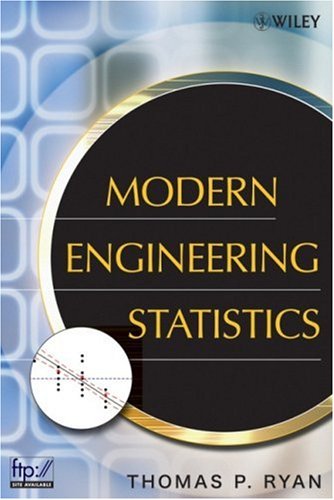
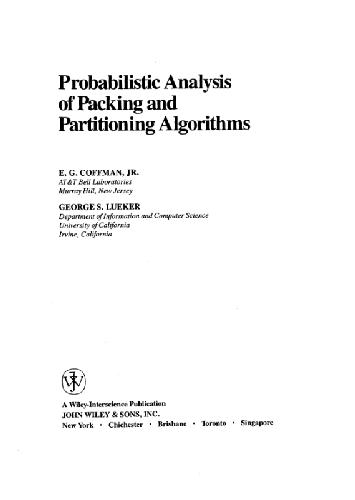
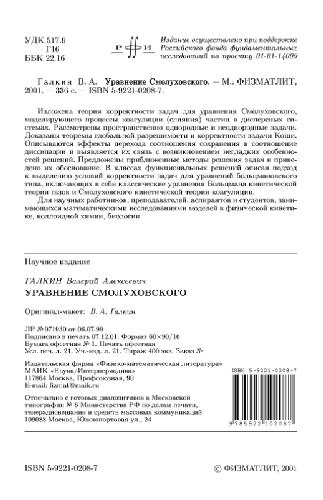
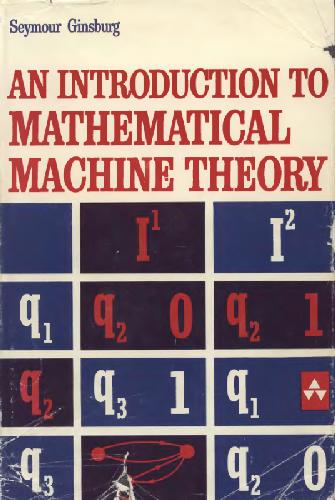
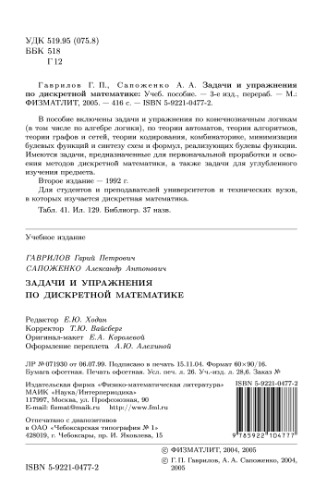
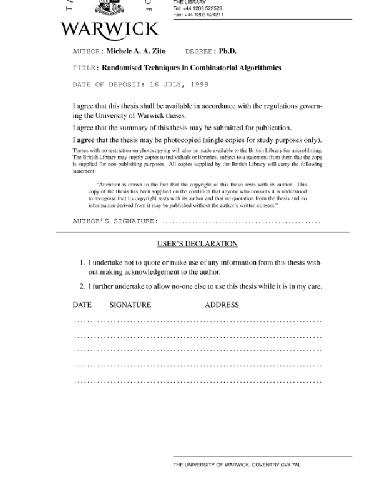

Reviews
There are no reviews yet.